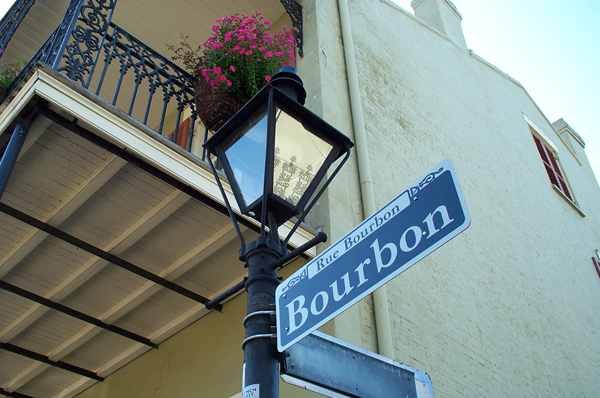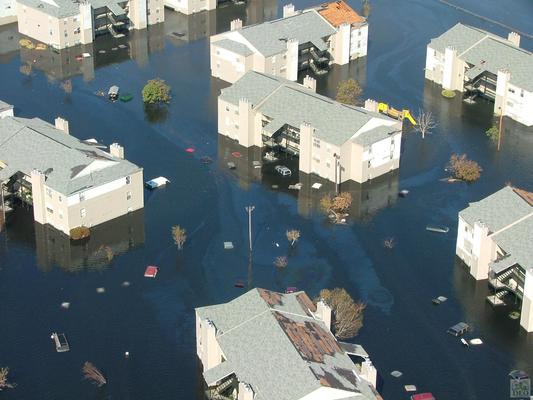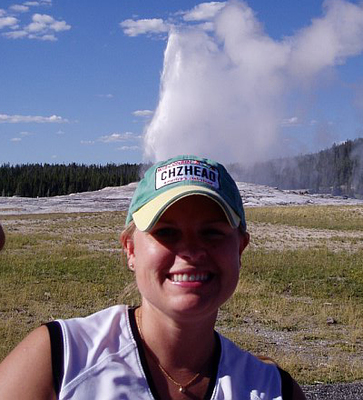
by Megan Sever Thursday, January 5, 2012

Bourbon Street in New Orleans. Justin Watt

A housing complex in New Orleans flooded after Hurricane Katrina. Water levels in much of the region did not drop for weeks. Louisiana Department of Environmental Quality

Megan Sever (pictured at Yellowstone) writes Hazardous Living for EARTH. Megan Sever
This weekend marks the fifth anniversary of Hurricane Katrina’s strike on New Orleans and the Gulf Coast. To commemorate the fifth anniversary of Katrina, I have spent the last week catching up on the first season of HBO’s series on New Orleans, “Treme,” listening to NPR’s excellent reports on New Orleans’ recovery and reading the commentaries by experts such as Columbia University’s John Mutter, who noted in Nature this week that Katrina was “a harbinger of how climate change will drive a thicker wedge between the haves and the have-nots” in this world. Meanwhile, Hurricane Danielle has reached Category 4 status in the Atlantic, in a year that NOAA projects a lot of strong hurricanes.
John Day, an ecologist at Louisiana State University in Baton Rouge, has been involved in Mississippi Delta issues for years. I sat down with Day to talk about how things have changed since 2005, and what still needs to be done.
MS: In the five years since Katrina and Rita struck, the Army Corps of Engineers has been found liable for flooding following Katrina. MRGO — the Mississippi River-Gulf Outlet, a shipping channel that allowed the storm surge to flow into St. Bernard Parish and the Lower 9th Ward — has been closed. Levees have been rebuilt in some places and shored up in others. The population of the area is still about 100,000 fewer than it was before Katrina, but a lot of people have moved back. So I guess the question on everyone’s mind is, “What would happen if another Katrina were to strike tomorrow?”
JD: Let’s talk about MRGO first. MRGO is closed now, so the water that came up the channel with Katrina is not possible anymore. They’ve built a barrier as well so saltwater can’t come in. It certainly could be overtopped in a big storm but you’d have to get up to five to 10 feet higher surge levels before structures were overtopped. This is good.
They’ve upgraded the levees along the Lower 9th Ward and St. Bernard’s Parish. And they’ve been doing work on the lakefront levees as well … whether they’d hold, I’d say “probably.” There are a lot of levees in the region — particularly along the west side of New Orleans — that are still subpar and you could have tremendous damage there if a Katrina hit again west of the river. But there’s no doubt that the levee systems have been vastly improved. Certainly it’s in better shape than it was five years ago.
They’ve also put a huge, 2-mile-long $1.4 billion structure across what was called the “funnel,” [a spot] where levees along MRGO and along the Intracoastal Waterway funneled the water [in 2005], causing it to stack up 20 to 25 feet. If Katrina came up that same track today, these levees are complete enough that water would not come through MRGO. And second, the structure would stop the funnel [effect].
MS: Are they building the levees to withstand a hundred-year storm or a thousand-year storm? And which was Katrina?
JD: They’re building to the hundred-year storm. It’s hard to say what Katrina was: It reached Category 5 out over the Gulf, but when it came ashore it was a Category 3.
MS: How will climate change affect things in this region?
JD: There are still active discussions about how bad it’s going to be, but certainly sea level is going to rise, and that’s going to intensify the impacts of storms in this region. And if you believe all the global warming predictions, stronger storms are going to become more common. I don’t think people are preparing for the future. I just don’t think people are taking seriously climate change and the energy issues that will lead to energy scarcity.
There’s a lot of sloppy thinking about sustainability and energy issues. We can’t run an industrial society on solar and wind energy. You can’t fly airplanes and run ocean liners and build nuclear power plants with wind energy, or build and maintain huge levee systems. It takes fossil fuels. We need to go after these renewable energies, of course — I have a 4-kilowatt solar system on my house, because the next time we lose power for seven days, I’m going to have power. [After Katrina], we also super-insulated the house, added stuff to the windows, changed the way we heat and cool the house. Things like this have to happen. There are a whole suite of issues that are going to have to be addressed as we move into this new age. Katrina can certainly provide the impetus.
MS: What else can we do to prepare?
JD: I think we need to pull away from the coasts to some extent. Much of New Orleans is still below sea level. I would have thought that after Katrina, they would have just said “Nobody lives below sea level.” I thought they would have raised houses or moved people. There was talk of that for awhile, but essentially people are still living at the same elevation. I would say that the odds are in the next 40 years, we’re going to have another disaster with the same results.
We should have highly fortified small outposts along the coast where we can maintain the fishing industry, but I think the general population has to pull back from the coast. I know I’m in the minority, but it ought to be a policy to make it happen in a way that would preserve our culture and allow long-term sustainability and I’m just afraid that’s not happening.
MS: How far are you talking about “pulling back”? Does that mean moving New Orleans?
JD: No, not at all. There are parts of New Orleans that are above sea level. If they had just made the decision after Katrina not to rebuild or to raise structures in places that were below sea level, all of New Orleans would be above sea level right now. That was a mistake. New Orleans is defensible. But it will flood again. And we’re in a situation now where sea levels are rising, the wetlands and delta are disappearing — so to build and maintain those [defense] systems becomes even more difficult and expensive. There’s a paper by [Michael] Blum and [Harry] Roberts, two delta geologists [at Louisiana State University] that was published in 2009 [in Nature Geoscience] that basically said with sea-level rise and sediment capture behind dams in the upper Mississippi Basin that most of the wetlands of the delta will disappear. This means that the hurricane buffer capacity of the wetlands will not be there. That makes the area even less defensible.
MS: What’s the feeling among the people who live in coastal Louisiana about the future?
JD: People who live at the coast want to be able to protect it; they want to go back to the way it was before Katrina. They want their lifestyle back. That’s understandable — I don’t blame them for feeling that way. My question is “Is it possible in a sustainable way?” I don’t think people are really looking at that question. But that’s what we have to consider.
© 2008-2021. All rights reserved. Any copying, redistribution or retransmission of any of the contents of this service without the expressed written permission of the American Geosciences Institute is expressly prohibited. Click here for all copyright requests.